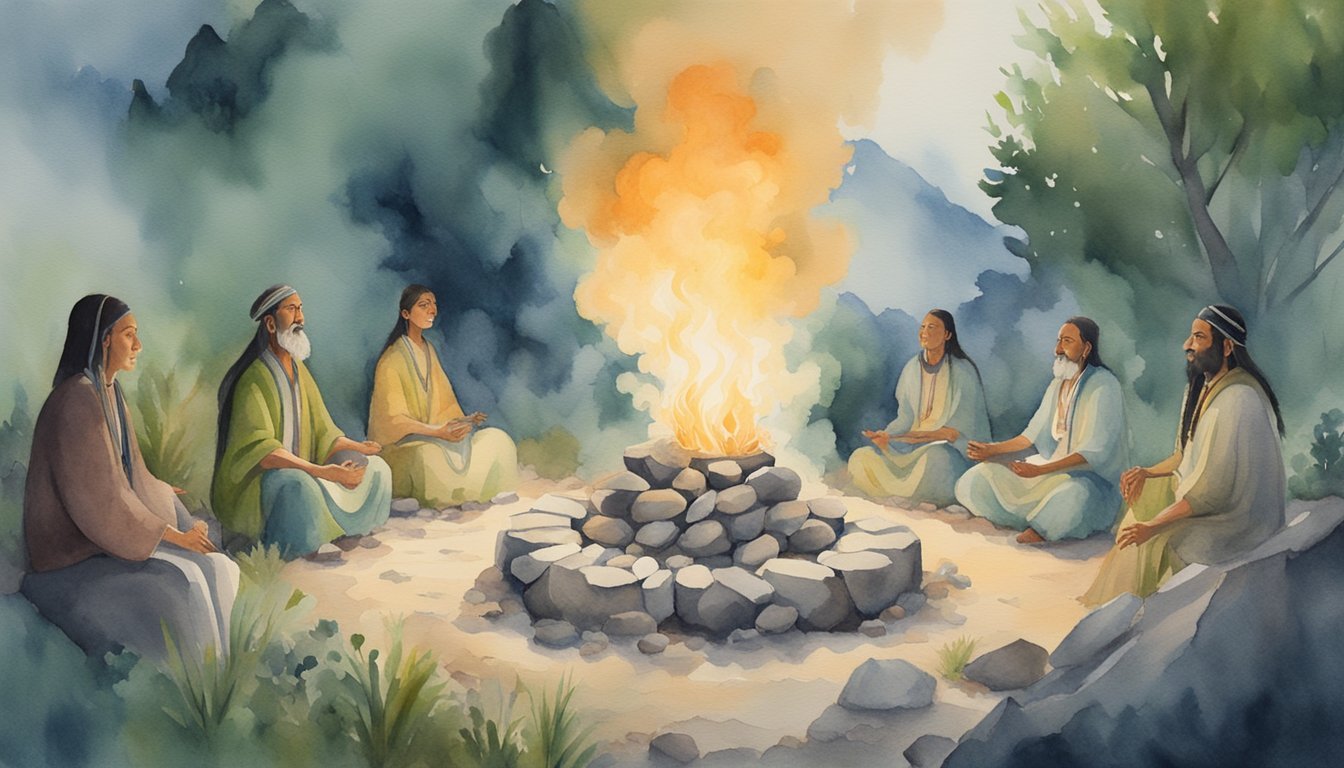Understanding Shamanism
Exploring the depths of shamanism unveils a realm where spirituality intertwines with ancient practices and beliefs deeply rooted in cultures around the world. This complex system is reflected in its historical origins and diverse definitions.
Historical and Cultural Origins
Shamanism is not an invention of a single time or place; it is a thread woven throughout human history, prevalent in many indigenous cultures. Particularly in Siberia, the Tungus peoples and the Evenki, among other indigenous groups of North Asia, practiced shamanism as a prominent part of their culture. Intriguingly, the word “shaman” comes from the Evenki of Siberia, from the Tungusic language, reflecting the etymological roots tied to the region.
Anthropologists have noted that practices resembling shamanism can also be traced back to other Arctic peoples and across both Americas. Shamanic practices, steeped in a respect for nature and the spirit world, have helped communities to navigate life’s challenges, from physical health to community wellbeing. This spiritual tradition often features rich tapestries of ritual and art, each uniquely adapted to the environments and beliefs of indigenous cultures worldwide.
Concepts and Definitions
Shamanism is characterized by its broad definitions and the various roles a shaman might play. A shaman can be best understood as a person who, through altered states of consciousness, interacts with the spirit world for purposes like healing, divination, and guiding the community. This may involve entering trance states during ritualistic practices, which is a central feature of shamanistic ceremonies.
The term itself is often used to describe the spiritual and religious practices of indigenous peoples, particularly animistic belief systems that venerate the interconnectedness of all living entities. As diverse as its practitioners, shamanism can embody vastly different traditions, yet it centrally concerns the balance and communication between the human and spirit realms. Some interpretations of shamanism imply a more general understanding, associating it with any individual who engages with the spirit world for the welfare of their community.
Practices and Experiences

Shamanic practices encompass a range of rituals and experiences that allow a shaman to interact with the spirit world for the benefit of their community. These practices often involve entering trance states, divining information, and performing healing rituals.
Roles and Responsibilities
Shamans serve as intermediaries between the physical world and the spirit realm. They are often considered to be healers, tasked with curing illness and maintaining the wellness of their community members. A shaman’s role can also be that of a priest, a guide called upon for spiritual practice, initiation ceremonies, and sometimes even to influence weather or game availability. They are seen as custodians of traditional medicine, utilizing plants and other natural elements for healing purposes.
Shamanic Techniques and Rituals
Shamanic rituals are rich and varied, reflecting a profound relationship with nature. They might include the use of drums, chanting, and dancing to enter altered states of consciousness, often referred to as trance states. During these trances, shamans are believed to communicate with spirits or ancestors, seeking guidance or help in healing. Some shamans also engage in psychopomp duties, facilitating the safe passage of souls of the dead to the afterlife. Lear more about Shamanic Techniques.
Shamanism in Contemporary Society
Despite its ancient roots, shamanic practice persists in contemporary society, sometimes intersecting with modern practices like psychotherapy and yoga. The Society for Shamanic Practice keeps the knowledge and traditions alive through audios, conferences, and annual member events. Shamanic principles have also been adapted to align with various cultural and religious practices around the world, from Catholic rituals in Latin America to San healing dances in Africa. Discover the adaptations of Shamanism today.

